Britain’s most brutal race

Jin fullførte The Spine Race 431 km
Norgesbosatte Jin Cao var en av 10 løpere som fullførte "The Spine Race" mellom Manchester og Edinburgh. Tid: 7 dager, 4 timer, 59 minutter.
Løpet som starter mellom Sheffield og Manchester er i utgangspunktet en tøff utfordring på 431 km med målgang litt sør for Edinburgh (460 km inkl en del tillegg til/fra førstehjelpstasjoner o.a.). Når været blir som i årets løp blir utfordringen enda større - men likevel fullførte 10 av de 29 startende løpet. En av disse var altså Norges Banks kineser Jin Cao.
Etter løpet sendte han oss omtale og bilder som dere kan se nedenfor.
Løpets hjemmeside
Løypebeskrivelse
Resultater
"Just returned from the SPINE Race, whitch was truly brutal"
 |
| On Cross Fells |
The race follows 268 miles “Pennine Way” – one of the longest hiking trail in UK – from Edale (south east of Manchester) to Kirk Yetholm (south west of Edingburg), through marshlands, bogs, rain, snow, fog, ice, and numerous mountains. The challenge is not only the distance and geography – it takes place in the coldest time (this winter is the coldest in UK for the last 103 years) and darkest (less than 8 hours day light every day) of the year, and there are only 5 checkpoints where competitors can get supply and rest (the distance between start and CP 1 is 80km, and CP 1 – CP 2 is nearly 100km, etc). Therefore, one needs to carry about 10-15kg compulsory equipments (tent, sleeping bag, stove, 2-day food…) and get prepared for the worst possible case. |
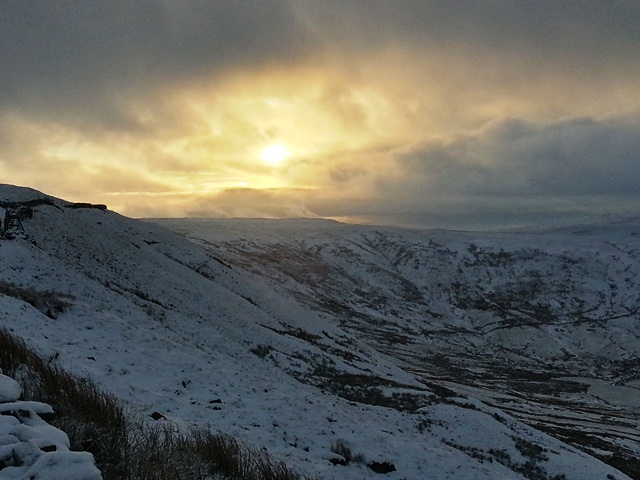 |
| The coming storm |
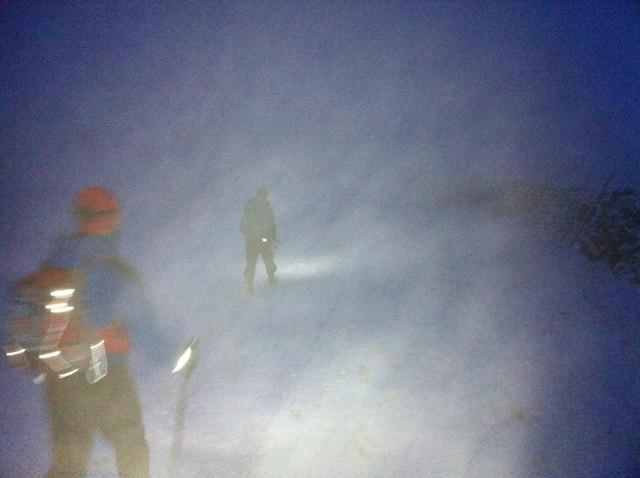 |
| Running in the storm |
Soon after the start, 8am of January 12, I realized that there is little about running – it is rather a race of winter survival skills. The rocks were so icy and slippery to run on, and the fields were basically infinite marshland so that the feet got quickly wet in the icy mud. The navigation was also a big problem, since there was no obvious “trail” for most of the course so that one could easily get lost in the dark foggy night. The heavy snow fall started on the second day, when most runners were going from CP 1 to CP 2. In that night, most of us slept in the tents, in a less windy field by a lake. The course got harder with time going on. In the third night, the temperature fell below minus 15. Everything got frozen, even the gels, and one could easily get frozen after one minute without moving. Then we had to climb up along a waterfall for 200 vertical meters, over a steep slope of huge boulders covered by ice with the torrent roaring down the gorge. After the fourth day, we came to the “Hadrian Wall” county which is notorious for its boggy fields and forests. One has to follow the GPS track very carefully to go through the bogs; with one step mistake you can easily fall into the chest-high water (and this happened to quite a few runners). The more north we went, the colder it became. As runners were running out energy, everyone wore at least 5-7 layers when we left CP 4. |
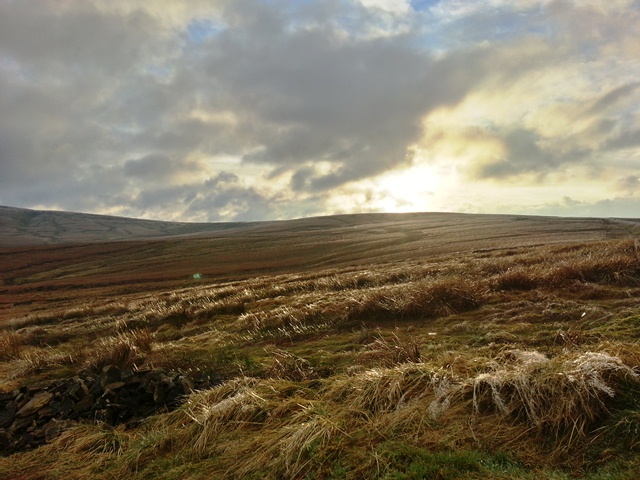 |
| Sundown in the fields |
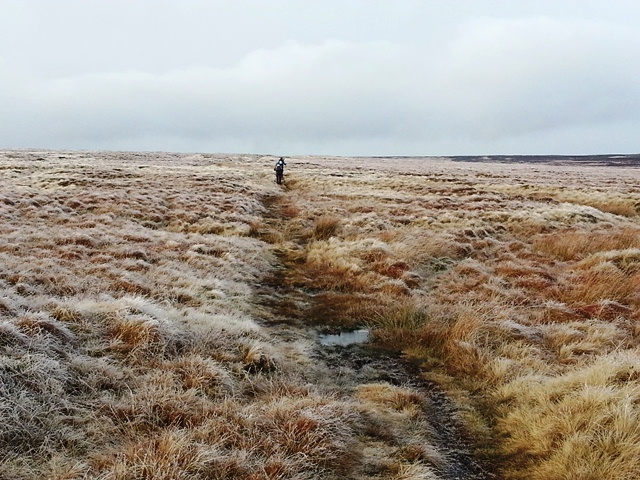 |
| The Moors |
For most of the course, I ran with two excellent German runners, Michael Frenz and Thomas Ehmke. We knew each other pretty well from the other races, and our pace and expertise fit quite well. In such race, it is much, much easier to run as a team than solo, since there are so many issues one has to keep in mind, to take care of, and to avoid any even the minor mistake. Our strategy is to keep our pace slow but steady, and find every possible opportunity to recharge ourselves. Quite a few times we deviated to the nearby villages to get proper food and drink from the pubs, and soon we got a nickname “pub crawler” among the participants – the Brits couldn’t understand how we could strictly stick to our plan without hanging around too long in the pubs! |
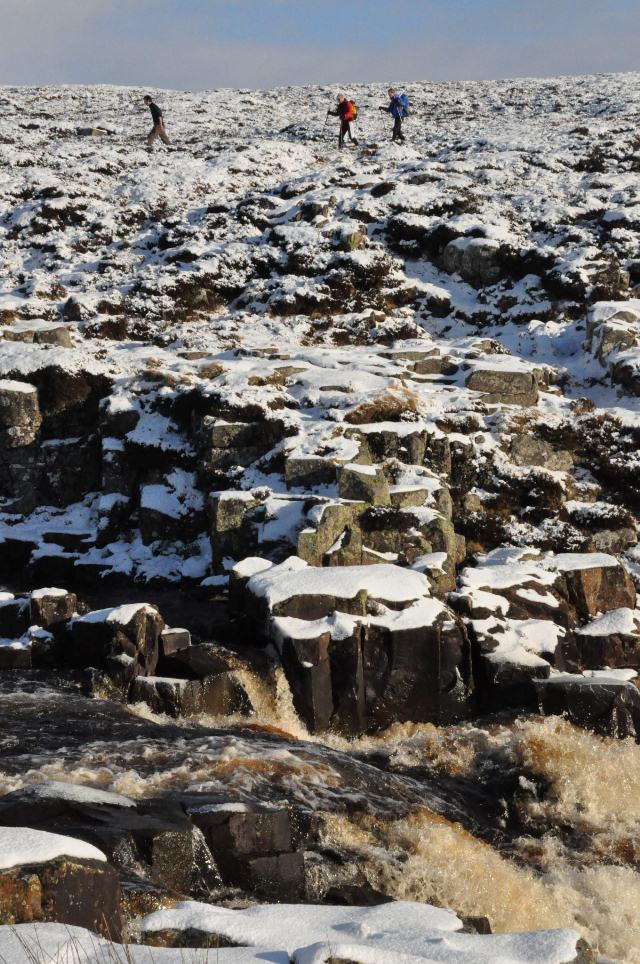 |
| Running up the ice covered rocks |
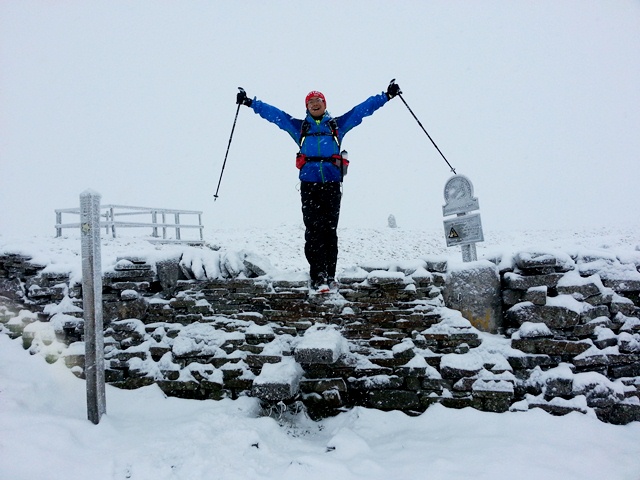 |
| On top of Pen-y-Ghent |
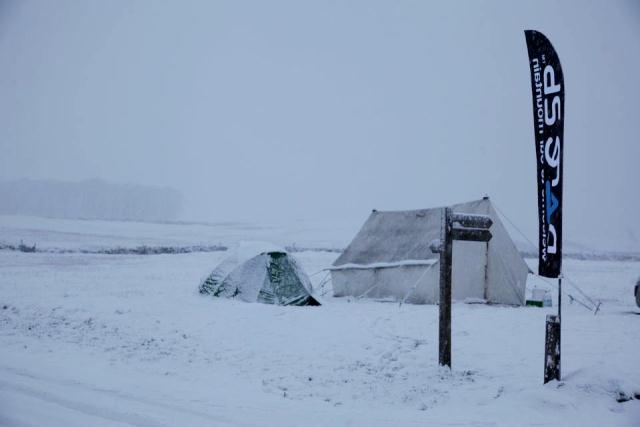 |
| Sleep in the tents in the snow |
When we were about to leave CP 5 for the last piece, bad news came. The bad weather were building up, a snow storm with 50cm snow fall and 50-70mph wind would hit the Scottish mountains in a few hours. After carefully calculating our chance, we decided to run against the weather. We merged with another team of Brits, Ian Bowles, Annabel Gates, and Brian Mullan, then we rushed about 40km in the day time before the storm hit. Now there were around 26km left, but that was just the start of the harshest time: the night came, and one could hardly see anything beyond 5 meters in the strong wind blow with snow. We had to stay close to each other and follow carefully the GPS route, since there was a 3-4km piece on a ridge with 300m vertical cliff on one side. It took us 8 hours to walk only 10km in the storm and the snow deep to the waist, everyone got very exhausted. When we reached a mountain refugee hut (to locate the hut is another tricky thing in the storm, although it was just a few meters away from the trail), we decided to stay there and wait for the day light. With all the equipments and food we carried, we didn’t suffer much for that night. In the next morning the storm was still severe, but it was slightly easier to go through in the day light. We took another 6 hours to get to the finish line, at 13:06 of January 19. |
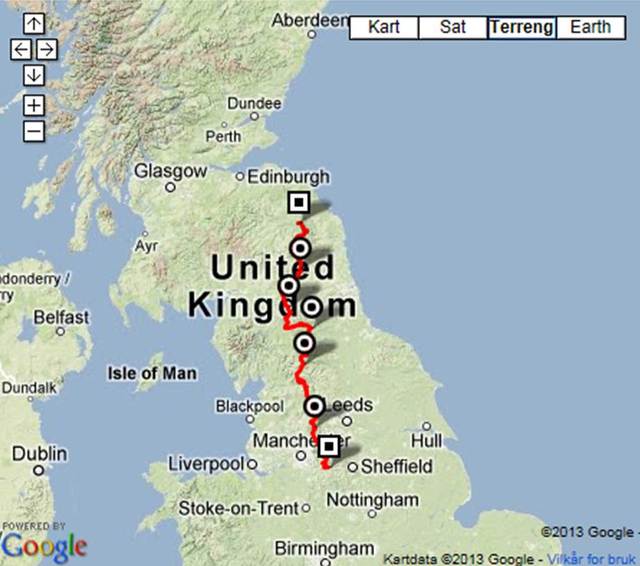 |
| http://www.thespinerace.com/race-route/ |
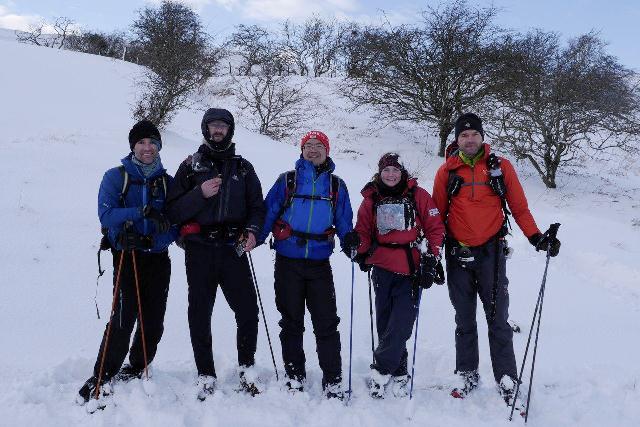 |
| At the finish line; Brian, Ian, jin, Annabel and Thomas |
Out of 29 “SPINE Racers”, 10 reached the finish line. The exact finishing time is still subject to adjustment, due to the extra hours we spent in the storm. But I guess to most of us the race is not about result and ranking, or, it’s not even about running. It is race about endurance, courage, experience, and comraderies. And as the best luck of us, there were so many devoted, extremely experienced people, such as race (co-)directors Scott Gilmour, Philip Hayday-Brown, Stuart Westfield, John Bamber etc, who helped us go through all the challenges. |
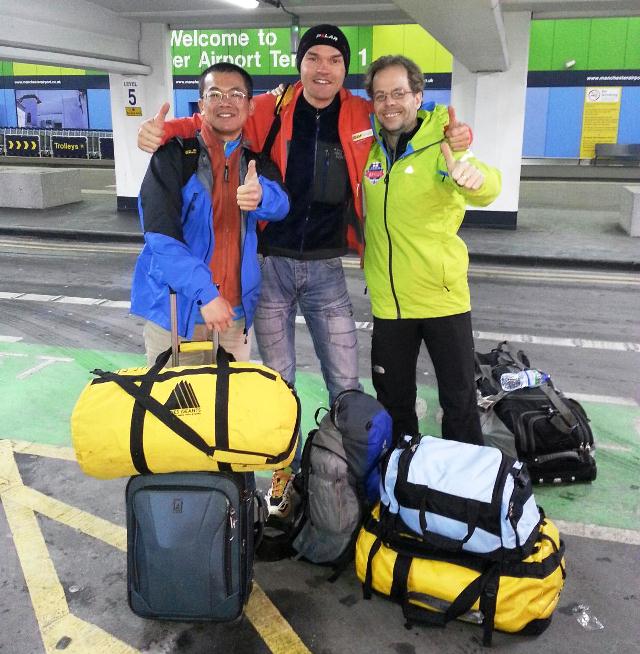 |
| Leaving Manchester Airport; Jin, Thomas and Michael |
Best regards |

















